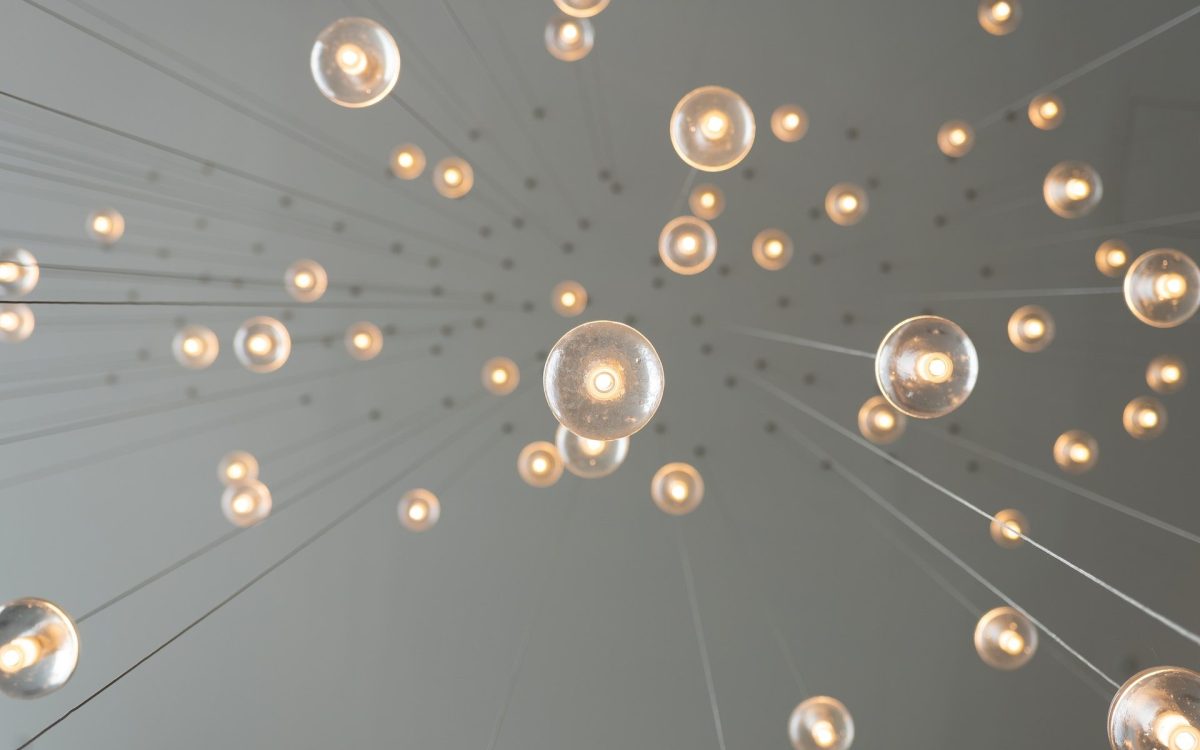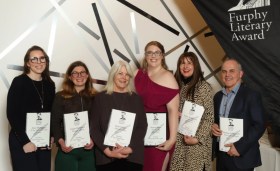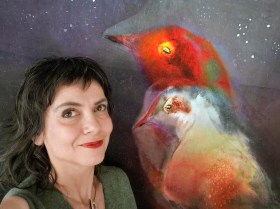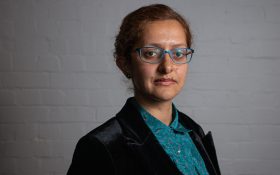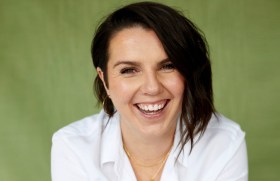As the 11th Institute of Professional Editors (IPEd) Conference draws to a close, ArtsHub recaps some of the critical conversations that aim to strengthen the editing profession.
Dr Louise Merrington and Tanja Gardner presented ‘Neurodivergence and editing: a view from the inside’ on 4 May. Together they offered an in-depth look at how being neurodivergent has added to their editing approach, as well as addressed some of the challenges they have experienced.
Both Merrington and Gardner worked as writers and editors before receiving a formal diagnosis. Gardner said, ‘It helped explain so many of the issues that I have struggled with in my personal and professional life.’
Table of contents
Understanding neurodivergence can contribute to understanding ourselves
Merrington said: ‘Neurodivergence is broadly defined as a suite of cognitive and developmental differences that are usually present from birth, although this depends on the definition that you’re using.
‘The broadest definition also includes any neurological difference that can make interacting with the world more challenging,’ she added.
Around 15 to 20% of the global population is estimated to be neurodivergent, but this statistic can be skewed, as not all receive a clinical diagnosis.
Financial barriers, professional medical knowledge and other obstacles can mean that many don’t receive a formal diagnosis, or are only diagnosed later in life.
Merrington continued: ‘Neurodivergence is also a cultural identifier, so it’s possible to identify as culturally neurodivergent without having a formal diagnosis.’
Understanding these neurological differences leads to an important revelation that what can appear as ‘being difficult’ or ‘unprofessional’ are executive function issues, not character traits.
Gardner said: ‘Low executive function can make it a struggle to maintain any kind of routine or long-term goals. Before I was diagnosed, it felt like some kind of moral character failing that I should be able to fix by just working harder or having more willpower.
‘It’s important to realise that these are very real challenges based in neurochemistry and neurology, but it doesn’t mean that they are insurmountable. It’s just overcoming them often requires accomodations,’ added Gardner.
Challenges of being neurodivergent in work contexts
Both Merrington and Gardner describe themselves as ‘word nerds’, which makes them especially compatible with the editing profession.
However, there are also many workplace procedures that are especially difficult for neurodivergent people, such as interviews, editing tests and workplace politics. Non-verbal communication like tone of voice, body language and eye contact can be difficult to navigate, and put neurodivergent people at a disadvantage.
Merrington added: ‘Fatigue and burnout are not diagnostic criteria [for autism], but these things occur as a consequence of interacting with the world as an autistic person.’
It’s also one of the reasons why freelancing can be a much better option, as it allows people to work in their preferred environments, avoiding sensory overload and having to navigate complex group dynamics.
Read: Creating a ‘trust mark’ for inclusivity
For Gardner who experiences ADHD (attention-deficit/hyperactivity disorder), executive function issues can appear like planning and scheduling issues. ‘Many people with undiagnosed ADHD can present as being late or completely forgetting appointments, which in a work context can be seen as extremely unprofessional and disrespectful,’ said Gardner.
‘Psychiatrist Dr Edward Hallowell describes ADHD brains as Ferrari engines with bicycle brakes, which is a metaphor I know resonates with a lot of ADHD people,’ continued Gardner.
‘ADHD is actually more about difficulty in regulating attention than lacking it. Verbal input like songs or conversations can yank out my attention as if somebody was standing right behind me. Time dysphoria means I regularly underestimate how long a task will take.
‘Difficulties with task initiation is another executive function issue that is common in ADHD. It’s important to know that this can look like laziness or procrastination from the outside, but the inner experience is being completely frozen and unable to take a single step forward,’ Gardner added.
Establishing your own workarounds can be really important, and workplaces that are able to accomodate to remote work or freelancing are vital to allow neurodivergent people to thrive.
How editing can benefit from a neurodivergent perspective
While many challenges exist, Merrington highlighted a plethora of strengths identified from her experience with autism. ‘Special interests that are intellectually stimulating and emotional soothing for us means that we make great subject matter experts when they align with our work,’ said Merrington.
‘Some of the benefits that I’ve experienced as a neurodivergent editor include attention to detail, a very regimented approach to understanding language and [being] good at spotting ambiguity.’
Merrington continued: ‘I have logical thinking and creative problem solving [skills]. When I do a structural edit for example, I see it almost visually like a puzzle where different pieces have to go into a certain place. I’m really attuned to the rhythm and flow of language, like music to colour synesthesia and a little bit of language to taste synesthesia.’
Merrington also benefits from great organisational skills that contribute towards project management and administration.
Gardner added: ‘There are several benefits to having an ADHD brain as an editor. My personal favourite elements are hyper-focus, divergent and creative thinking, and I approach language very differently to many editors.
‘There’s also a willingness to keep asking questions because I’m so hyper aware of ambiguity. I recognise all the ways that the editing brief could be misinterpreted.’
Clear communication benefits all
Abrupt changes can be really stressful for neurodivergent people, but maintaining a clear line of communication is beneficial for everyone in the workplace.
Changes in time, expectation and parameters around a project should be communicated as soon as possible. It also helps to provide clear reasons behind these changes.
Also it’s a good idea to check in on people’s preferred mode of communication. Merrington said she prefers to mostly work via email, rather than phone calls, which can be overwhelming.
Gardner explained: ‘I think neurodivergent brains struggle to quickly process and retain verbal briefing information. A business can use written briefing forms, while providing transcripts if it’s a phone or video briefing is essential.’
She continued: ‘Frequent clear communication at all project stages is vital. Most editors recognise that project scope and timelines can change over time. But unless the client or employer communicates the changes clearly ahead of time, neurodivergent editors can struggle to adapt. Also divergent editors may well ask more questions and the willingness to answer these is another accommodation.’
Read: Key considerations for neurodiverse collaborations
Overcoming communication gaps needs to start with ‘recognising the benefit of diversity’, said Gardner.
‘Different communications styles are often just that – different, rather than inherently better or worse. “This is the way we’ve always done it” is a rationale that stifles innovation and prevents new efficiencies.’
Gardner continued: ‘Bridging communication gaps often starts with just asking about what an editor’s preferred way of working and communicating is. Next, ask whether the business could accomodate this and, if not, what needs to change. And finally, commit to clear, unambiguous briefs, project communication and feedback.
‘This is a commitment that will benefit all of your employees, not just neurodivergent ones.’
For neurodivergent editors, Gardner’s advice is to find how you work best, communicate your needs to your employer and connect with other successful neurodivergent professionals.
‘Just knowing that other successful people with brains like yours exist … can be incredibly affirming,’ concluded Gardner.
Using inclusive language around neurodivergence
Gardner highlighted some commonly used terms around neurodivergence that better represent our neurological differences.
Neurodiversity: This was coined by psychologist Judy Singer to mean a population-wide, natural variation in human genetics. It’s an alternative to the deficit model where those differences are seen as being ‘lacking’ compared to what is considered ‘normal’.
Accomodations: Changes to the usual ways in which things are done in an organisation or business so that somebody isn’t unfairly disadvantaged.
Read: Big predictions for workplaces in 2023
On the spectrum: Think about autism as a visible light spectrum, rather than a single gradient from ‘more autistic’ to ‘less autistic’. An autistic person has a profile of strengths and characteristics, each one is like a colour that will be brighter or dimmer than others.
Identity first versus person first language: It can often seem more inclusive to use person first language, i.e. a person with autism, but some in the autistic community prefer to describe themselves as autistic (i.e. an autistic person). Always respect the way that an individual identifies themselves, rather than assume what’s ‘right’.
High-functioning or low-functioning: These terms are based on what someone ‘should look like’ compared to ‘normal people’ and can be quite damaging. High support and low support needs can be used instead, and it’s important to recognise that someone’s level of functioning can be affected by outside factors such as stress.
Asperger syndrome (Aspie): A term named after Nazi psychiatrist Hans Asperger for lower support needs autism, but now the term Autism Spectrum Disorder Level One is more commonly used. Many autistic people reject this connection, but some may still refer to themselves as an Aspie if they were diagnosed before the name change. Again, it’s really important not to tell other people how they should identify.

